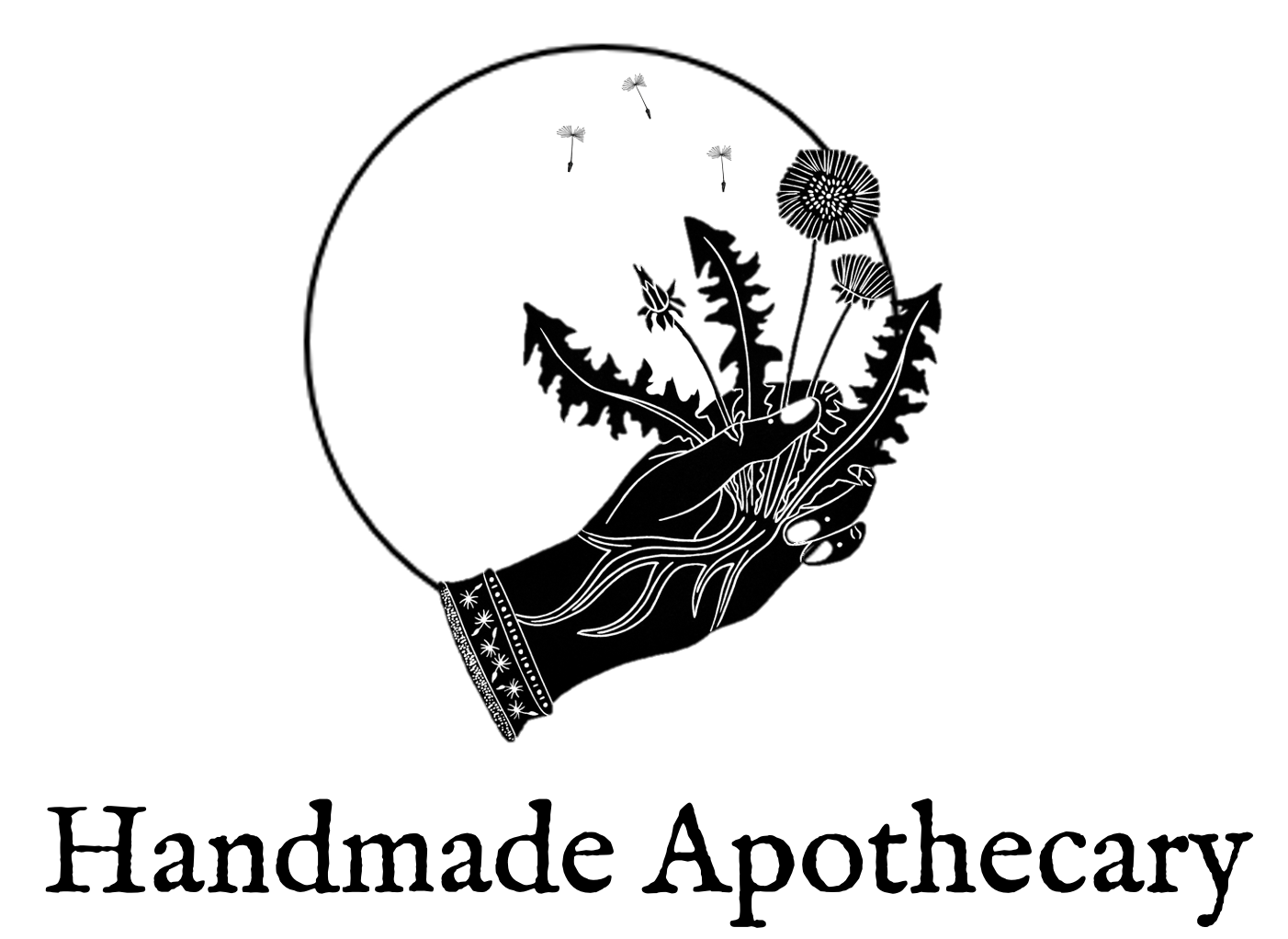Make: Herbal infused oils
What are herbal infused oils?
From top to bottom: The infused herbal oils of Calendula, Comfrey and St. John’s wort. From the Handmade Apothecary (C) Kyle Books 2019.
Herbal infused oils are base oils (e.g. sunflower, olive) that have had herbs soaked in them for a period of time. Some medicinal qualities of the herbs infuse into the oils. These are then used topically, on the outside of the body, as a rub.
Infused oils keep for long period of time, usually 1-2 years. Some herbs are only seasonal for a few weeks or months, so if you infuse them into oils when they are at their peak, they can be used all year round. Infused oils are also more convenient to use, they are ‘ready to go’.
Common infused oils include calendula, St. John’s wort and comfrey.
Using oil to infuse herbs also adds warming properties that stimulate and soothe the body part when rubbed on.
Infused oils can also be used in other recipes: massage oil, bath oil, balms, ointments and creams.
The difference between infused oils, carrier oils and essential oils
Infused oils are carrier oils with herbs infused into it to create a herbal remedy.
Carrier oils are extracted from the fats and oils found inside seeds, nuts or fruits. They are stable and (mostly) neutral and can be used directly on the skin. If you put a drop of carrier oil on a piece of paper it will leave a stain.
Essential oils are extracts of aromatic (fragrant) herbs. They are a concentrated extract of a small component found inside herbs. These oils are highly scented and are made of very concentrated plants chemicals. These are not safe to put directly on the skin as they can cause burns and allergic reactions (though there are a few exceptions). Nor are they safe to eat. If you place a drop on a piece of paper, they will evaporate and leave no or minimal staining.
Which oils can be used?
Any carrier oil can be used to infuse herbs. If using the heating method, there is no need to use expensive cold pressed oils which can be damaged during heating (however, cold pressed oils do make a superior oil for delicate areas like the face, simply use gentle heat options). Here are some common examples:
Sunflower oil - cheap and fairly neutral in scent and often comes from Europe, so more ‘local’ to UK buyers. For body rather than face use.
Rapeseed oil/Canola oil - cheap and neutral in scent. Also a more ‘local’ oil for UK buyers. For body rather than face use.
Olive oil - cheap, nourishing and good for those with nut/seed allergies. Thick, more moisturising for dry skin, slight scent. For body rather than face use.
Almond oil - for dry and sensitive skins, light scent. More expensive than the first two. Suitable for face.
Grapeseed oil - for oily skins, light and easily absorbed. More expensive than the first two. Suitable for face.
Jojoba oil - for all skin types, including oily. Matches natural skin sebum and therefore great for facial use.
Butters: In the UK shea, cocoa and coconut oil/butters are solid on purchase, with a consistency like very firm butter. When infusing butters, it is therefore best to use the heating methods to melt them to get the herb in. Once strained and cooled, butters also make a 'cheat's ointment' suitable for vegans who avoid beeswax.
Which herbs can be used?
Here is an (un)exhaustive list of popular herbs used for making infused oils. Because the water content in fresh herbs can cause infused oils to have a shorter shelf life, it is best to use dried herbs or fresh herbs that have been slightly wilted (left to half dry overnight), though there are some exceptions such as St. John’s wort.
Calendula flowers (Calendula officinalis)- Creates a beautiful orange-gold oil. Used in skin healing and a mild anti-microbial. Also used as a base for thrush remedies.
St. John's Wort (Hypericum perforatum) - Creates a deep red oil. The fresh herb is always used, with the sun method for 40 days. This oil is valued as a wound healer and for reducing pain. It is used for back pain, neuralgia and aching joints. St. John’s wort is also an excellent remedy for the pain and scar reduction in minor burns and sunburn. It contains anti-viral compounds and can be used for reducing pain and scarring spraying on shingles lesions (use as a spray, as rubbing can be painful).
Elder Leaf (Sambucus nigra) - Picked before the tree is in flower, the spring leaves create a dark green/black oil used for treating the inflammation and pain of strains, sprains and bruises.
Daisies (Bellis perennis) - A ‘British arnica’, this oil is great for bruises and small wounds.
Rose petals (Rosa spp.)- pink and deliciously scented, great for cosmetic use and as a calming & relaxing massage oil.
How to make infused oils
For infused oil recipes, please click on the button below.

